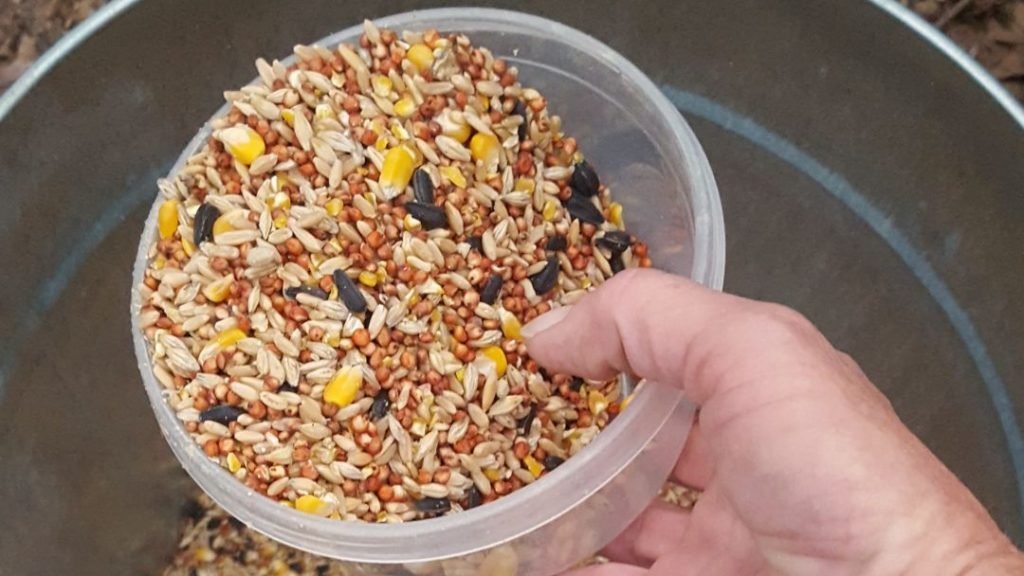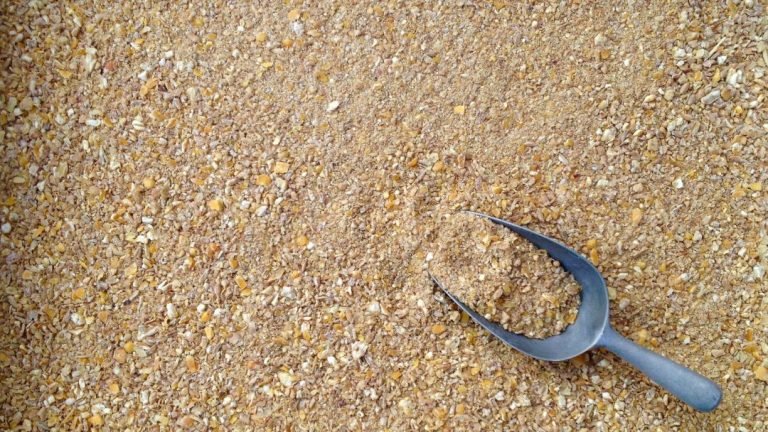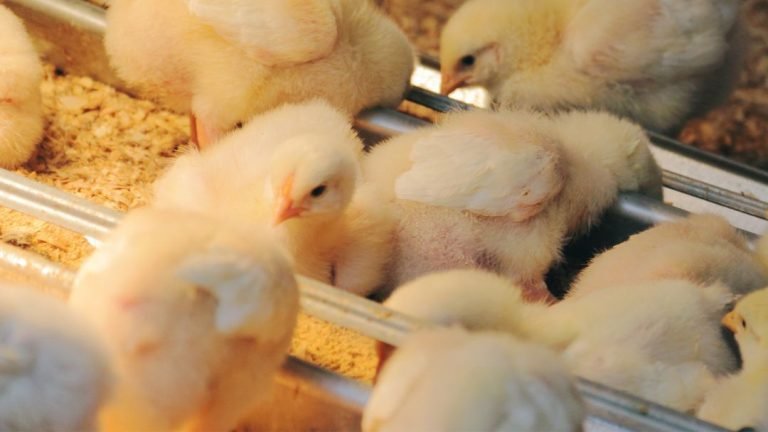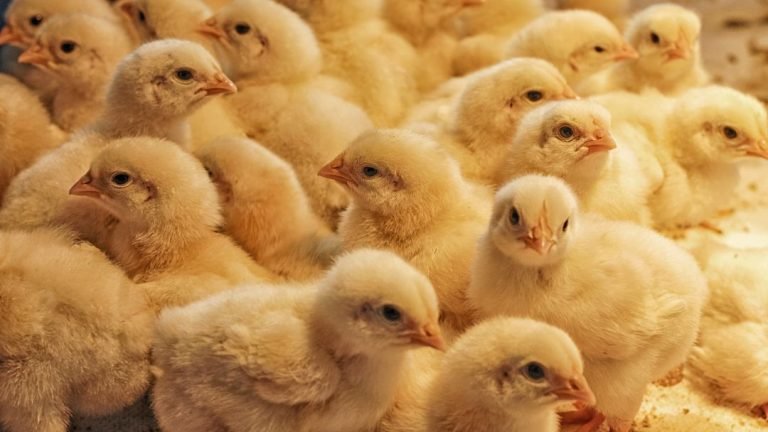As a cautious and over-protective chicken owner, I think commercial-based chick starter feed is not the best option for my younger chickens. Plus, they are a bit expensive.
That’s why I have decided to make my own chick starter feed. I know it is a bit time-consuming. But it is still worth providing a balanced and healthy nutritional diet to my chicks.
The best part is that it gives me the freedom to choose the ingredients based on my chickens’ requirements. But I need to clarify to my readers that making starting feed is a hassle job.
Hence, if you think you are ready to take the hassle, you have landed on the right spot. This article will guide you on how to create a chick starter feed at home.
How to Make A Commercial-grade Chick Starter Feed?
Choosing the right ingredients is mandatory to ensure a balanced and healthy diet. Hence, you need to be a bit picky when selecting various options.
Make sure to choose organic ingredients to provide natural and safe food.

Recipe 01: Chick Starter Feed Without Fish Meal
| Item Name | Amount |
|---|---|
| Naturally grown wheat | 1200 grams |
| Unprocessed and raw oats | 1200 grams |
| Southern peas/cowpeas or field-peeled peas | 1200 grams |
| Sesame seeds or flax meal | 240 grams |
| Hulled sunflower seeds without any shell | 240 grams |
| Blackstrap molasses | 28.3 grams |
| Kelp powder | As per the requirements |
| Brewer’s yeast | 28.3 grams |
| Raw or cooked eggs | As per the requirements |
| Leafy greens | As per the requirements |
Recipe 02: Chick Starter Feed With Fish Meal
| Item Name | Amount |
|---|---|
| Naturally grown wheat | 1200 grams |
| Unprocessed and raw oats | 1680 grams |
| Southern peas/cowpeas or field-peeled peas | 720 grams |
| Wild-caught fish meal | 360 grams |
| Hulled sunflower seeds without any shell | 240 grams |
| Blackstrap molasses | 28.3 grams |
| Kelp powder | 60 grams |
| Brewer’s yeast | 28.3 grams |
| Raw or cooked eggs | As per the requirements |
| Leafy greens | As per the requirements |
If you add all these ingredients as per the table, the entire mixture will weigh around 4200-4300 grams.
Step-by-step Guidelines
Step 01: Grab a large bucket. Add all the seeds, peas, wheat, and oats together and mix them appropriately using a mixing spoon or a wooden spoon.
Step 02: Take another smaller bowl and add 720 grams of the mixture to it. Then, add molasses to the small bowl and keep stirring them using a silicone spatula.
Step 03: Next, add kelp powder, brewer’s yeast, and flax meal or fish meal. Keep stirring them using a silicone spatula until they create a consistent texture.
Step 04: Then, put back all these mixtures from the small bowl into the bucket. Again, stir the mixture appropriately using a silicone spatula until they create a consistent texture.
Step 05: If the mixture is a bit dry, add a small amount of water. This will help you achieve a balanced mixture.
Step 06: Next, you want to grind the mixture as baby chicks will struggle to crumble. Use a professional-grade blender to grind all items perfectly and creates a mashed texture.
Points To Be Noted
If you are adding organic eggs from your own firm or a reliable source, you can use raw eggs in the mixture. But it is best to half-boil or cook the eggs properly when buying them from stores.
Another important aspect is determining how many eggs to add to the mixture. A simple rule is adding one for every 1440 grams of the mixture.
Eggs spoil faster. You can’t add them several days before using the feed. It is best to add it one day before serving the chick starter feed. Make sure to store it in the refrigerator.
It is crucial to use organic leafy greens that are free from chemicals. Lettuce, kale, turnip greens chard, etc., are the best choice for baby chicks.
Don’t forget to Use a vegetable cutter or food chopper to chop the leafy greens finely. Add 120 grams of leafy greens for every 960 to 1440 grams of starter feed.
How to Make A Simple Chick Starter Feed?
Making a commercial-grade starter feed is time-consuming and expensive. If you have recently hatched eggs, you may not have enough time to make a commercial-grade feed.
So, what can you do? Chicks need food after one day of hatching. Here is a simple starter feed you can make at home within a few minutes.
I know it is not as nutritious as a commercial-grade starter feed. But it is a quick-saver as long as you make or buy the starter feed.
Step-by-step Guidelines
Step 01: Cook the eggs properly for 10-15 minutes. Let it be hard-boiled. It is especially good for weak baby chicks.
Step 02: While you cooking the eggs, take out your food processor. Tear the dry bread into pieces and grind them into the food processor.
Step 03: Before taking out the breadcrumbs, check out their size. It should be as small as possible. This enables baby chicks to eat them easily.
Step 04: Grab a sharp knife to chop all the leafy greens into pieces. Keep their size consistent and make them as small as possible.
Step 05: Now, mix boiled eggs and breadcrumbs together and stir them gently. If it comes too soft and watery, you can add extra bread. Finally, add the chopped leafy greens.
Step: 06) Keep stirring the food until it creates a consistent texture. The mixture should not be too watery or dry.
What Ingredients A Chick Starter Feed Must Have?
Whether you want to make a chick starter feed or buy it from a commercial brand, it must contain some essential ingredients to make it a complete and healthy food.
| Protein | Fats | Carbohydrates | Vitamins | Minerals |
|---|---|---|---|---|
| Corn | Flaxseed | Wheat | Leafy Greens | Aragonite |
| Field Peas | Camelina | Barley | Carrots | Oyster Shells |
| Wheat | Almonds | Brown Rice | Broccoli | Whole Grains |
| Sprouted Seeds | Fish Oil | Sweet Potatoes | Spinach | Nuts |
| Fish Meals | Chia Seeds | Oats | Kale | Fish |
| Eggs | Walnuts | Corn | Fruits | Meat |
Protein
Baby chicks need 20% to 22% protein for their first 6-8 weeks. But adult flocks need 17% to 18% protein.
Compared to adult chickens, they need more protein to grow faster and develop muscles. It also makes their bone stronger and denser.
Additional protein in starter feed makes Baby chick warmer. They can easily withstand harsh winter conditions.
If chooks don’t receive enough protein in their early stage, it will cause slower growth. They may also have malnutrition issues and less appetite for food.
Fats
A chick starter feed must contain between 2.5% to 3.5% fats. The palatability of chick feed increases due to fat addition. Fats come in various forms.
For instance, fatty acids are necessary for better utilization of feed and energy. It also plays a key role in developing healthy cells and hormones.
There are also fat-soluble vitamins such as A, D, E, and K. Many chicken owners also feed lipids (fats and oils) to their chooks.
But flaxseed, camelina, and fish meal contain the best fats. They are healthy and don’t cause excessive weight gain.
Carbohydrates
Baby chicks need a minimal amount of carbohydrates to produce energy and fuel their body cells. It is necessary for living, breathing, and body functions.
Cellulose is one of the most common forms of carbohydrate, which is made of polysaccharides. This special fat can also improve their egg production abilities in the future.
Another common carbohydrate is crude fiber. It plays a crucial role to digest and absorb food easily.
Vitamins
Vitamins come in various forms. The followings are the primary vitamins and how they can be beneficial for baby chicks.
| Various Types Of Vitamins | Benefits |
|---|---|
| Vitamin A | Ensures normal growth, Regenerates cells, and Helps bone development |
| Vitamin D | Improves feather growth, helps to absorb calcium better, and makes bones stronger |
| Vitamin E | Improves fertility, boosts immune response, and significantly protects semen/sperm |
| Vitamin K | Better functions of clotting mechanisms improves feed intake and boosts the immune system |
| Vitamin B1 | Reduces the risk of anemia and dermatitis |
| Vitamin B2 | Prevents diarrhea and paralysis and improves chicks’ abilities to deal with heat stress |
Minerals
If you want to keep your chicks healthy and super active, providing minerals is necessary.
Besides, minerals play a crucial role in improving the metabolic processes of young chickens.
Minerals come in various forms, such as calcium, phosphorus, copper, zinc, cobalt, chlorine, magnesium, potassium, and sodium.
Calculate how many benefits it will provide when you add an ingredient to your homemade starter feed.
Wrapping UP
Many chicken keepers prefer to feed homemade chick starter feed when a reliable option is unavailable. But it is vital to add the right amount of nutrients, vitamins, and minerals.
You can neither too less nor too much. Otherwise, it won’t be a healthy food for your younger chickens. I have already discussed how to make your own chick starter feed at home.
This article talked about three methods. You should try the first two options if you want to provide a balanced diet. The last one is only suitable for short-term purposes.





